Natural Sciences
Banana’s Large Plant Body Size an Advantage to Disease Control – Mak Scientists
Published
2 years agoon
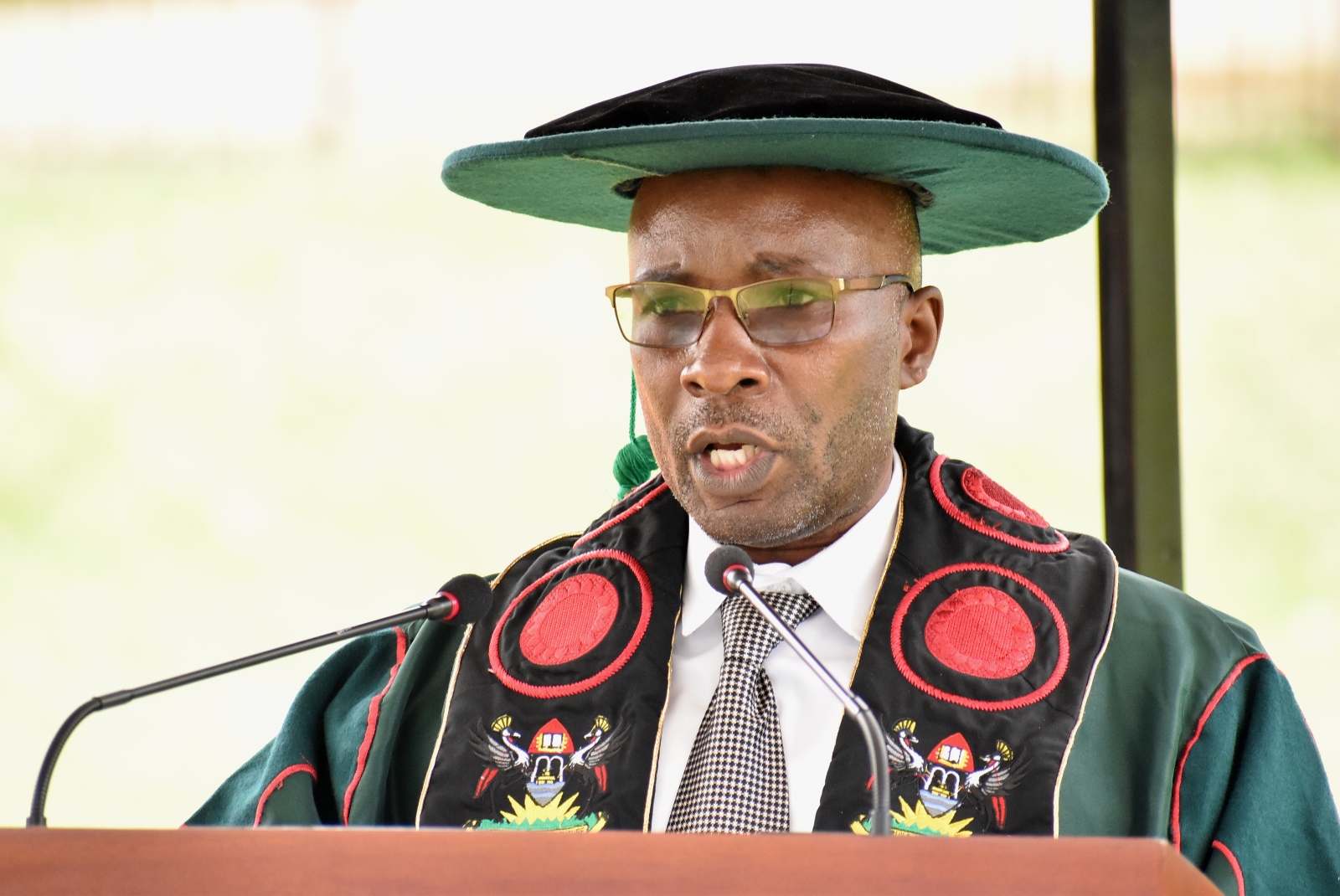
Unlike for plants, in animals especially humans, body mass index (BMI, which is a person’s weight divided by the square of height) is a measure of physical health and pre-disposure to conditions like obesity. BMI does not make sense in plant health because of differences between plant and animal physiological systems.
However, large body size in plants may have some advantages. Apart from controlling a larger proportion of available resources and space within crowded vegetation, what other advantage does a large plant body size offer to an individual plant?
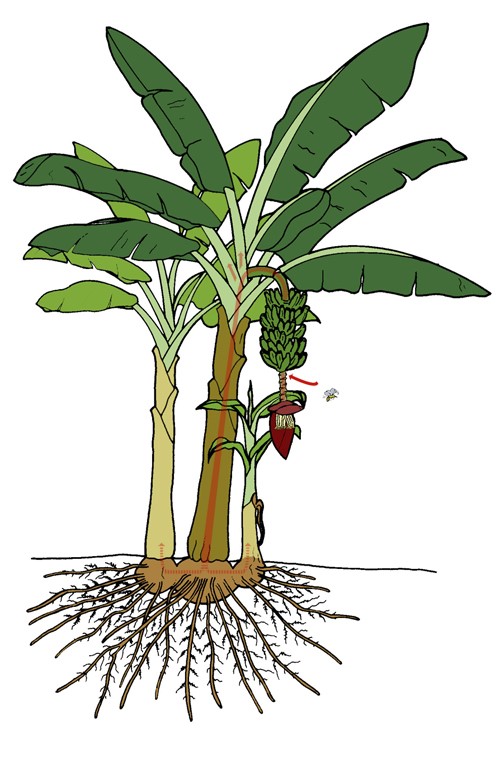
The banana’s plant body architecture
From the botanical point-of-view, the banana plant is a gigantic herb. A plant that is a herb or “herbaceous” is unable to undergo “secondary growth” and cannot form wood during its vegetative development.
The banana plant springs from an underground “true stem”, also called the “corm” or “rhizome”, to form a false stem, also called a “pseudostem” of 2-7 m height. The pseudostem is composed of the basal portions of leaf sheaths and is crowned with a rosette of 10 to 20 oblong to elliptic leaves that sometimes attain a length of 2-4 m and a breadth of 70 cm.
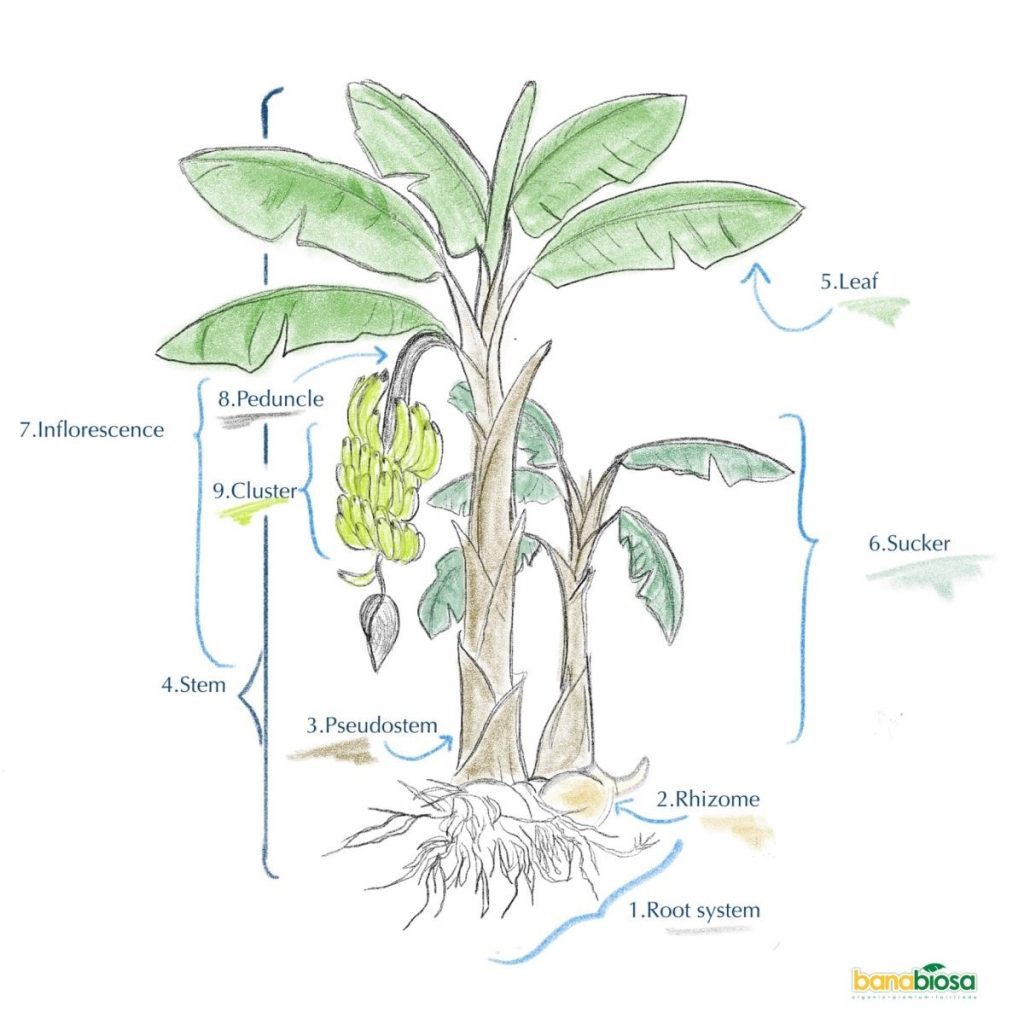
In mature banana plants, true stem emerges at the top of the pseudostem and bends downward to become a bunch of 10 to 300 individual fruits, or fingers, grouped in clusters, or hands, of 3 to 22. The edible part of the bunch is the female. In contrast, the inedible distal part, including the purple-colored cone-shaped end (locally known in some Ugandan dialects as “omukanaana” or “empumumpu”) constitutes the male part of the bunch.
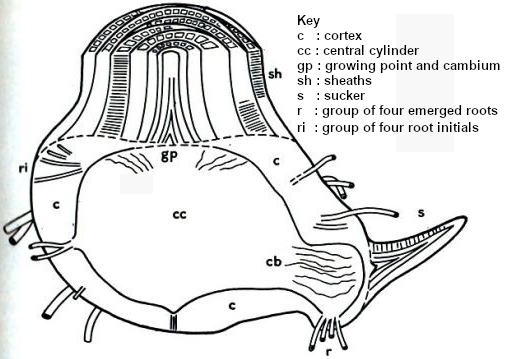
How is the giant banana size an advantage in disease control?
A new study, titled “Xanthomonas campestris pv. musacearum Bacterial Infection Induces Organ-Specific Callose and Hydrogen Peroxide Production in Banana” and led by a team of scientists at the Department of Plant Sciences, Microbiology and Biotechnology at Makerere University in collaboration with the University of California, Davis, USA, shows how the giant banana body size can be used to control banana Xanthomonas wilt (BXW) disease.
According to Prof. Arthur Tugume, the lead scientist of this study and expert in plant pathology, when plants get infected, they respond instantly by implementing different strategies that limit the multiplication and/or mobility of the disease agents (pathogens). “For example, plants rapidly produce reactive oxygen species (ROS) such as hydrogen peroxide, superoxide ions, and hydroxyl ions. These ROS act as rapid messengers in the plant tissues to activate additional responses spreading over the entire plant body. This helps the plant’s distant tissues or organs to be aware and prepare advance defenses against the intruding pathogens”.
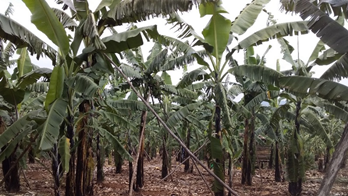
Prof. Dinesh-Kumar the project’s research collaborator based at the University of California-Davis, USA and expert in plant biology explains that “disease is a form of stress in plants and plants cannot perform well their biological functions when they are sick since they have to spend a lot of energy fighting against the disease. This is why disease control is important to enable plants grow well and yield high.”
The research indicates that ROS set in motion additional processes to ensure limited impact of disease and pathogens on the plant. For example, Hydrogen peroxide (H2O2), which is a ROS, has direct bactericidal, fungicidal or other anti-effects on the pathogens. Also, following H2O2 production, a unique plant carbohydrate, named “callose” starts to accumulate in large quantities within plant cells as a means of fortifying plant tissues. Callose differs from the other usual plant carbohydrates such as starch or cellulose because of the way its structures are formed.
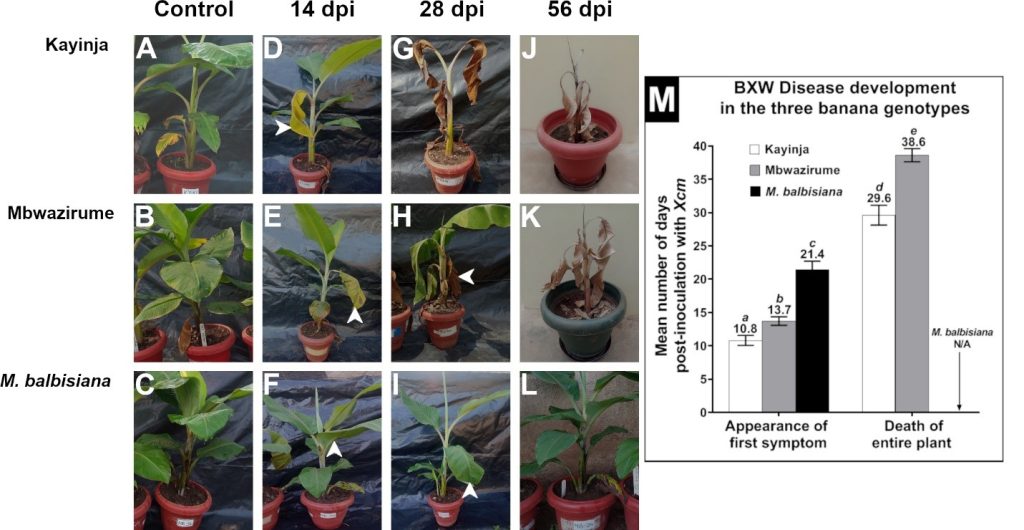
Increased production of callose acts as a roadblock to any pathogen e.g., bacteria by limiting bacterial movement that would otherwise allow ease of attack on other tissues or cells at distant locations in the plant. “Although these plant defense responses are rapid, plant organs that are distant from the site of pathogen attack can be instrumental and block progression of bacteria or other pathogens by depositing callose in advance at strategic points” Prof. Tugume explains.
However, Prof. Tugume notes that callose participates also in many other normal developmental processes of plants, and for that reason, there is always some “housekeeping” callose in the plant tissues even without pathogenic infection. “This means that one must be able to accurately and quantitatively distinguish between ‘stress-induced’ and normal ‘housekeeping’ callose”, he adds.
How was the study done?
In this study, the researchers used young (2.5-months old) banana plantlets that had been generated from tissue culture at Kawanda Agricultural Research Institute. They then infected the plantlets with a bacterium called Xanthomonas campestris pv. musacearum (Xcm). This bacterium is the causative agent of banana Xanthomonas Wilt (BXW), the most destructive disease of bananas in East and Central Africa (ECA).
The banana leaves, pseudostems, corms and roots were analyzed for callose and compared with the control plants that had been inoculated with water instead of bacteria. H2O2 production was monitored by “DAB staining”, and by “spectrophotometry” while the analysis of callose was done by two methods: staining and visualization of callose using florescence microscopy, and using “Sandwich Enzyme-Linked Immunosorbent Assay” methods.
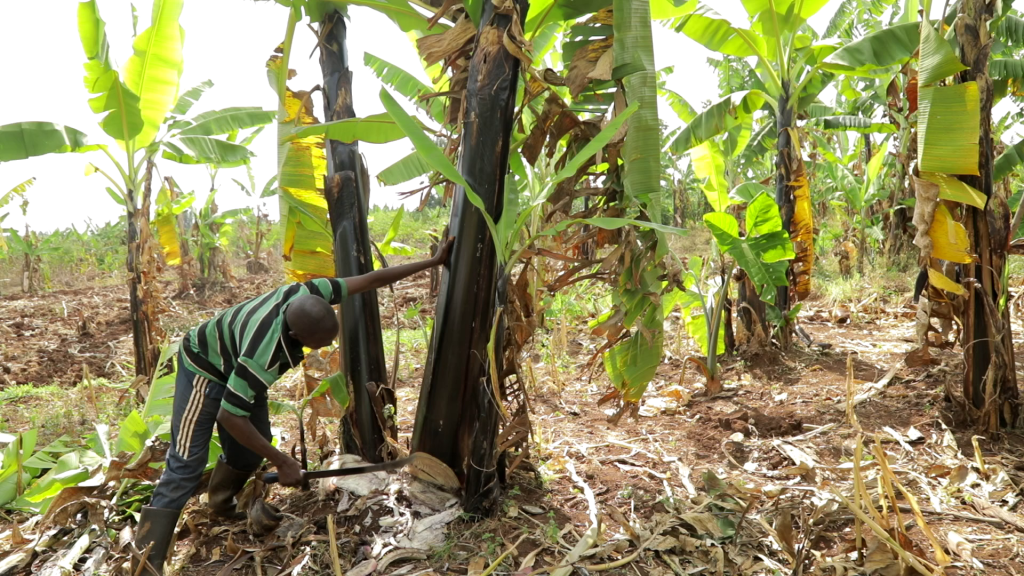
What did the researchers discover and how can it be used in BXW disease control?
This study revealed that the underground corm tissues assemble the stiffest resistance against BXW by depositing the highest concentrations of callose, while the pseudostem produced the highest quantities of H2O2. This is interesting for three (3) main reasons:
- Firstly, Xcm bacteria often enter through the leaves in regular plantation husbandry; hence, the corm being distant from leaves gives it an anatomical advantage in promoting the ability of lateral plants to escape Xcm infection.
- Secondly, the corm is an organ of perennation supporting vegetative and perennial continuity of the crop across seasons; hence it is charged in ensuring a disease-free next generation by severely constraining “mother-child transmission” of Xcm bacteria.
- Thirdly, the control of BXW now becomes easy when farmers are observant to the first aerial disease symptoms because Xcm is strongly constrained by bottlenecks in the pseudostem and corm.
Therefore, at the onset of aerial symptoms, diseased peudostems should immediately be removed by aseptically cutting them off at the corm without interfering with symptomless lateral shoots, which allows continuous food production and disease control to go on simultaneously. This is facilitated by the large size of the banana plant because at the onset of leaf symptoms (2.5 to 5 meters away from the corm), the bacteria have not yet arrived at the base of the pseudostem where the diseased plant can be cut off from the corm. This gives chance to a farmer to eliminate the infected pseudostems early (in 1 to 7 days) since the appearance of leaf symptoms.
This research was part of the PhD studies for Mr. Abubakar S. Mustafa at Makerere University and University of California, Davis. According to Mr. Mustafa, these discoveries make the management of BXW in banana plantations easy as long as the farmers are observant and act fast by removing diseased plants aseptically.
This study has been published by the American Phytopathological Society (APS) in an open access journal, “PhytoFrontiers”, and is freely accessible on https://apsjournals.apsnet.org/doi/full/10.1094/PHYTOFR-11-21-0073-R.
This study was funded by the Bill and Melinda Gates Foundation through the National Agricultural Research Organization (NARO), Uganda. The project had partners including the International Institute of Tropical Agriculture (IITA), the Alliance for Bioversity International and International Centre for Tropical Agriculture (CIAT) and Centre for Agriculture and Bioscience International (CABI).
For more details, contact;
Prof. Arthur Tugume
Lead Scientist
College of Natural Sciences (CoNAS)
Makerere University
Email: arthur.tugume@mak.ac.ug
Tel: +256772514841
Mr. Abubakar S. Mustafa
Co-Author and PhD student on the study
Email: mustafa.abubakar.sadik@gmail.com
Tel: +256702813233
Hasifa Kabejja
Principal Communication Officer
College of Natural Sciences (CoNAS)
Makerere University
Email: pr.cns@mak.ac.ug
Tel: +256774904211
You may like
-
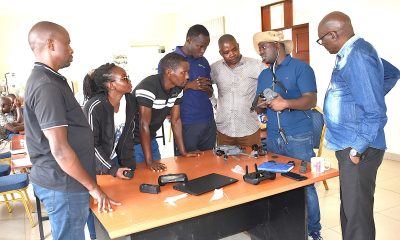

NbS4Tea Project Team Makes Great Progress, Deploys Drones for Data Collection
-
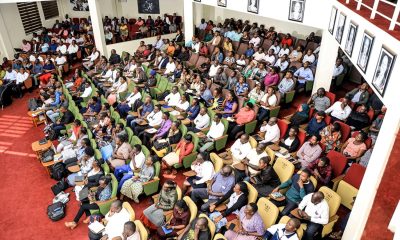

Call for Abstracts: 2nd East African Symposium and Expo on Trauma, Injuries, and Emergency Care – 2025
-
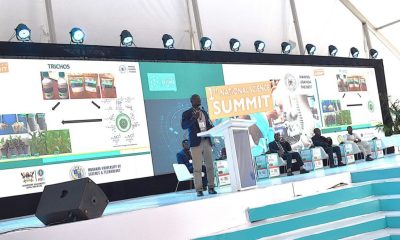

CoNAS Participates in the 2025 National Science Week Exhibition
-
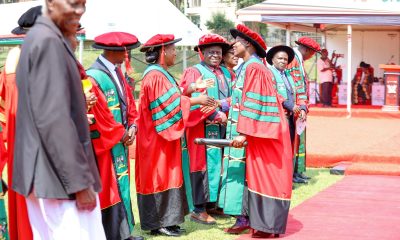

Scholarship Opportunity: Impact of Food Supplementation
-
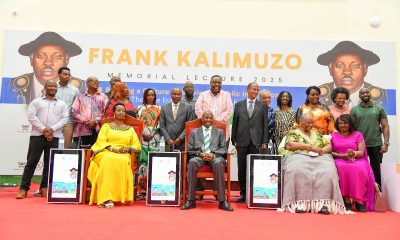

Mirror Frank Kalimuzo’s life of service-MUBS Principal
-
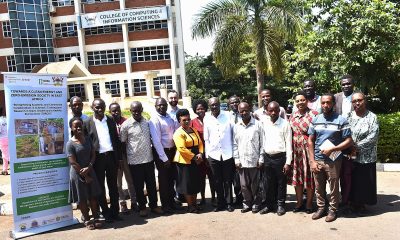

New Mak-CAES Project to Spur Green Growth in East Africa
Natural Sciences
CoNAS Participates in the 2025 National Science Week Exhibition
Published
2 weeks agoon
June 17, 2025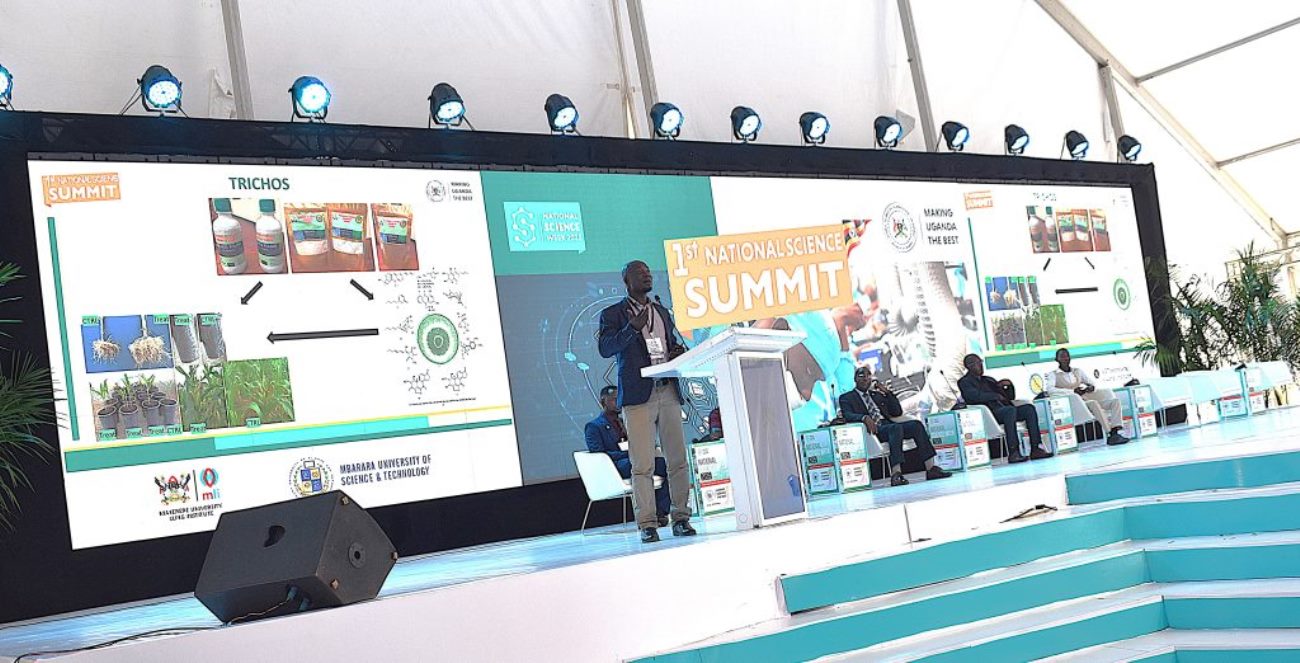
*****15 students from different departments at CoNAS are showcasing their projects.
Over 300 Ugandan innovators, among them students from the College of Natural Sciences (CoNAS) and other science-based colleges at Makerere University are participating in the 2025 National Science Week exhibition, currently underway at the Kololo Independence Grounds.
Launched in 2021, the National Science Week is an annual event organized by the Science, Technology, and Innovation (STI) Secretariat under the Office of the President. The exhibition serves as a strategic platform for showcasing Uganda’s advancements in science, technology, and innovation, both at the national level and on the global stage.
Held under the theme “Made in Uganda: Innovation to Market”, the 2025 edition (running from 15th-20th June) aims to highlight the country’s growing capacity to transform home-grown scientific ideas and research into viable, market-ready products and technologies.
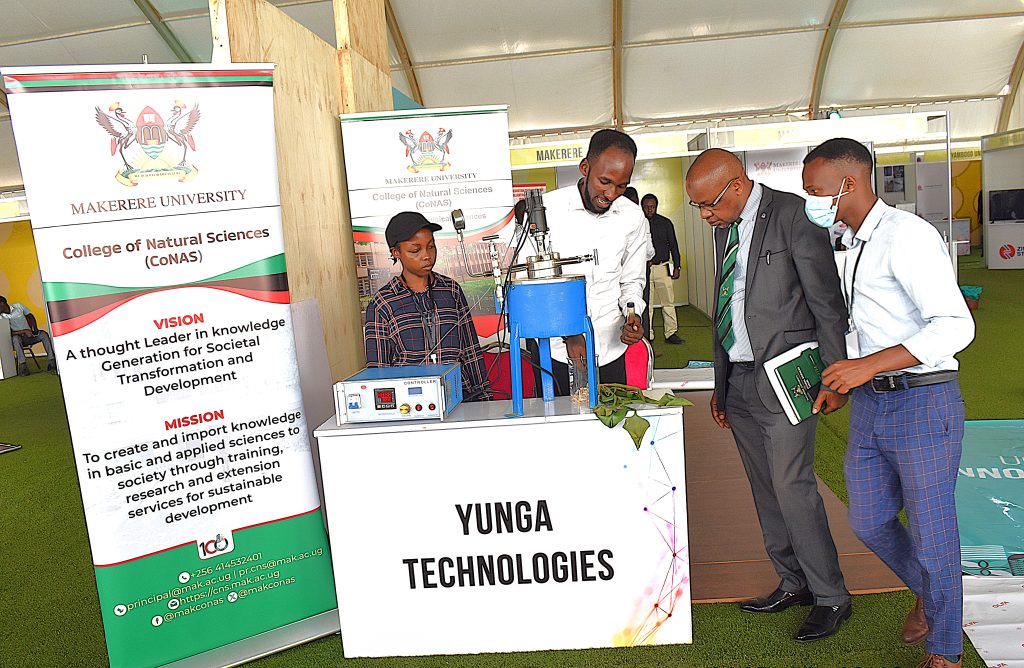
Key highlights from the official launch of the National Science Week
During the official launch held on 13th May 2025, the Minister of Science, Technology, and Innovation, Hon. Dr. Monica Musenero Masanza, outlined several milestones Uganda has achieved over the past year, including:
- The commencement of clinical trials for locally developed therapeutics, marking a significant step in Uganda’s biopharmaceutical sector.
- Notable growth in the electric vehicle (EV) industry, including the deployment of over 5,000 electric motorcycles and 27 electric buses across the country.
- Establishment of critical green infrastructure, including 140 battery swapping stations and more than 30 direct current (DC) fast chargers nationwide.
According to the Minister, these developments demonstrate Uganda’s advancing capabilities in green technology and sustainable mobility solutions.
The Minister also highlighted additional achievements by the STI Secretariat, including the revitalization of Sukulu Phosphates, the launch of both the Deep Tech and Climate Tech summits, and the operationalization of vaccine production lines for both human and animal health. Dr. Musenero expressed gratitude to the Government of Uganda for its continued support, emphasizing its strategic vision of leveraging science, technology, and innovation as a transformative vehicle to position Uganda as a continental leader in deep tech innovation.
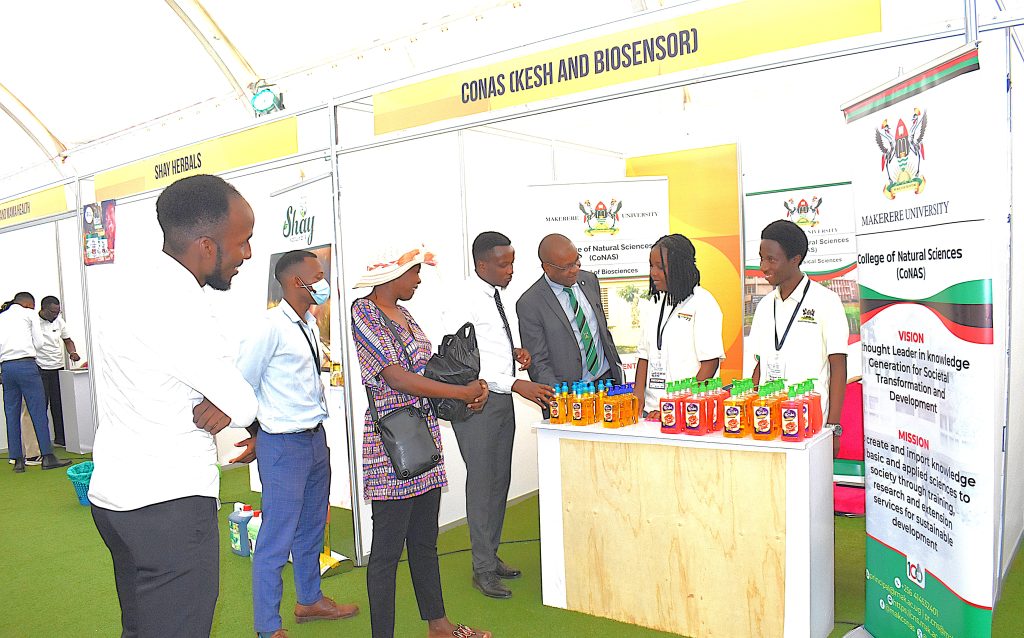
The 2025 National Science Week Activities
The National Science Week is designed to be an interactive experience for all attendees. According to Ms. Cathy Muhumuza from the STI, the exhibition will feature various activities including the official opening by the President of the Republic of Uganda, H.E. Yoweri Kaguta Tibuhaburwa Museveni, expected to take place on Thursday, 19th June 2025. Other activities will include policy dialogues, the Academia Day dedicated to young innovators, and the Investor Day providing a platform for innovators to connect with potential investors.
Additionally, the event will host a “Made in Uganda Supermarket,” allowing visitors to purchase products directly from exhibitors.
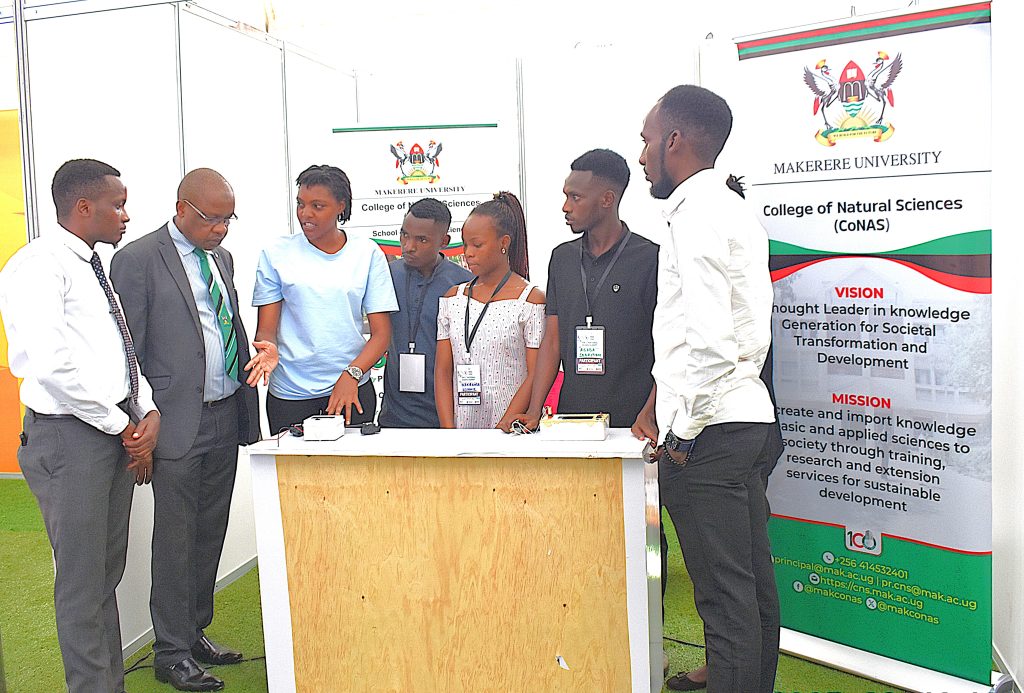
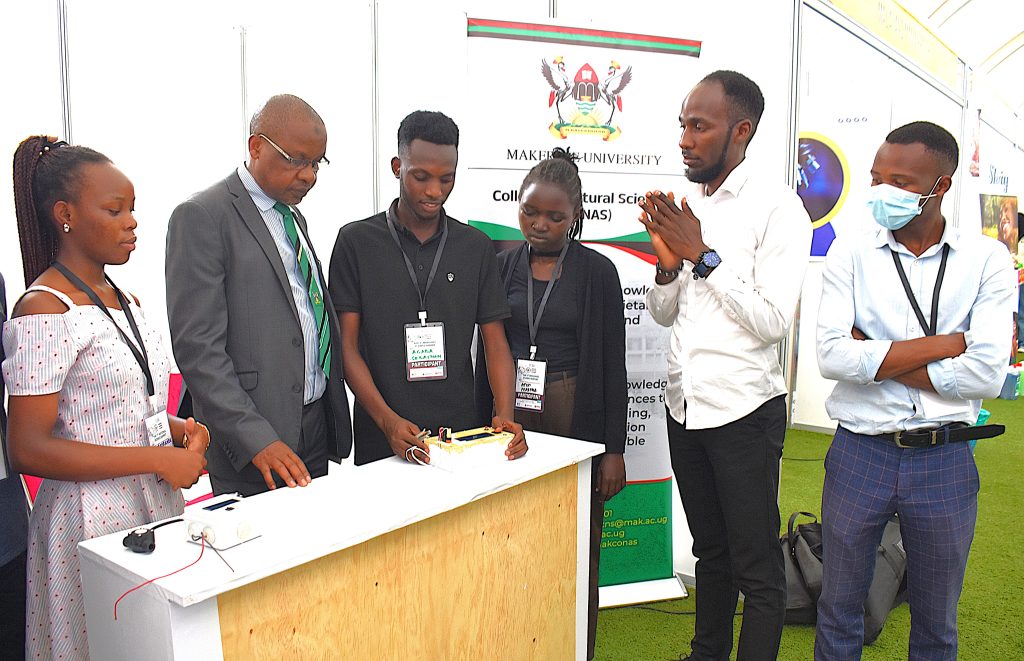
CoNAS Students’ projects
Among the many innovators featured at the exhibition are several talented student teams from CoNAS, presenting a diverse array of projects across scientific disciplines, including biotechnology and green energy. Guided by their lecturers and coordinated by Prof. Juma Kasozi, Deputy Principal of CoNAS, the students are showcasing the following projects:
- Anti-fungal and Anti-bacterial Gel Research Project
Team Leader: Mwebaze Bruce
Team Members: Atim Martha, Sebastian Jordan
This project explores the development of a topical gel with both anti-fungal and anti-bacterial properties, aimed at improving public health outcomes in communities with limited access to conventional treatments. - Minoxidil Production for Hair Regrowth
Team Leader: Keinembabazi Melissa
Team Members: Hashima Nanyiri, Nkamusiima Andrew
Focused on producing affordable, locally made Minoxidil, this project aims to provide a cost-effective solution for treating hair loss. - Infrared Biosensor for Aflatoxin Detection
Team Leader: Rubeihayo Randolp
Team Members: Namuleme Martha, Wabitereza Teddy
This innovation utilizes spectrophotometry to develop an infrared biosensor capable of detecting harmful aflatoxins in food, contributing to food safety and public health. - Biofuel Production from Water Hyacinth
Team Leader: Bill Garvin
Team Members: Kalanguka Patience Pearl, Nuwagaba Victor
The project converts invasive water hyacinth into sustainable biofuels using hydrothermal liquefaction, offering an environmentally friendly alternative energy source. - Automobile Fuel Gauge Detector
Team Leader: Ayebare Sam
Team Members: Achieng Rosemary, Nakirinda Winnie
This project involves the development of a reliable fuel gauge detector to improve vehicle fuel management and efficiency.
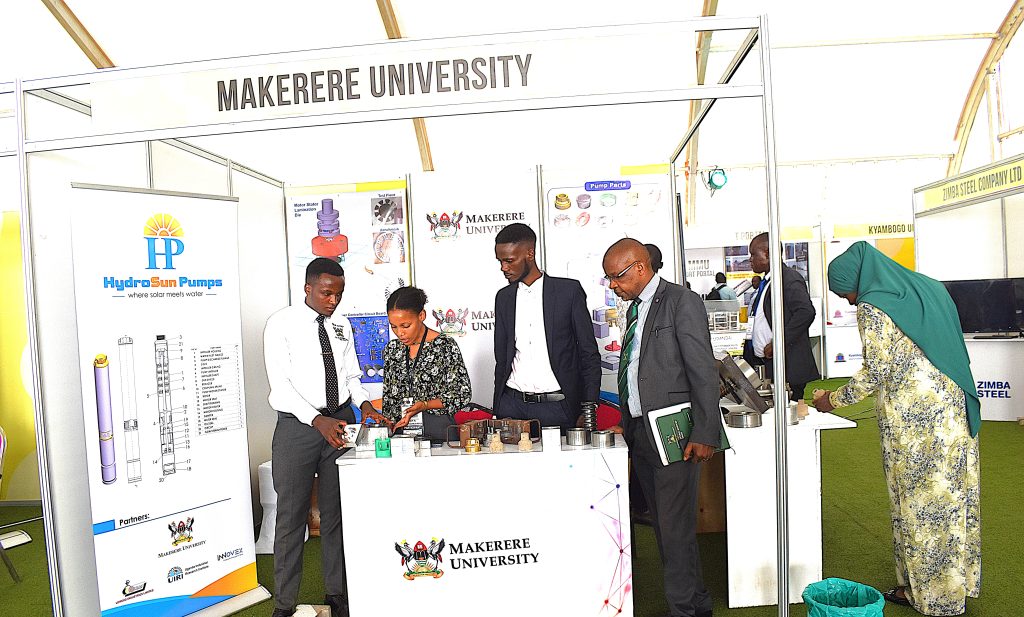
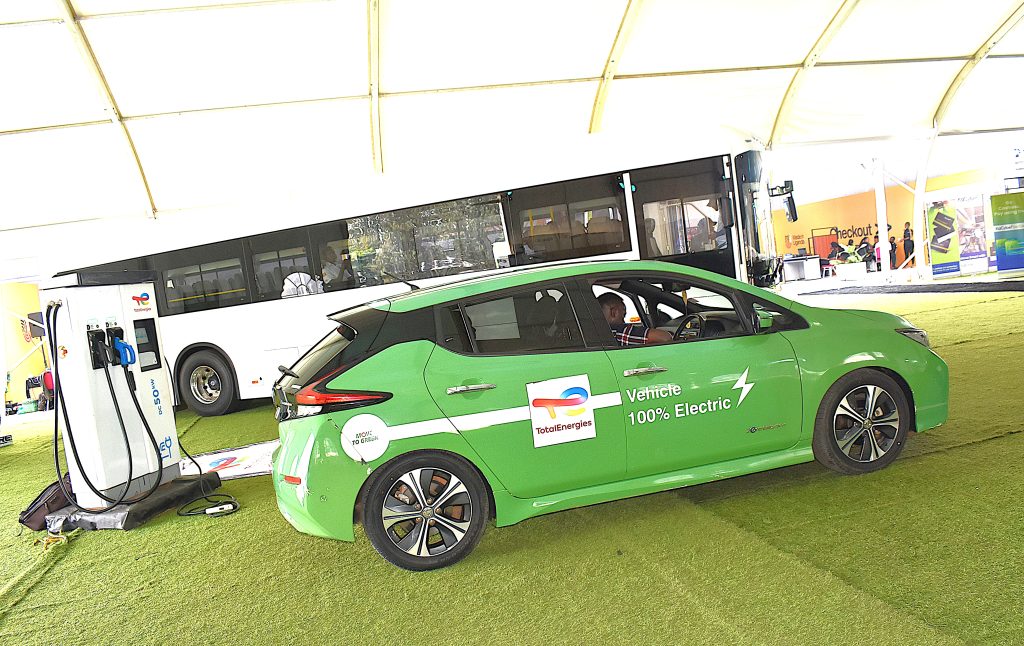
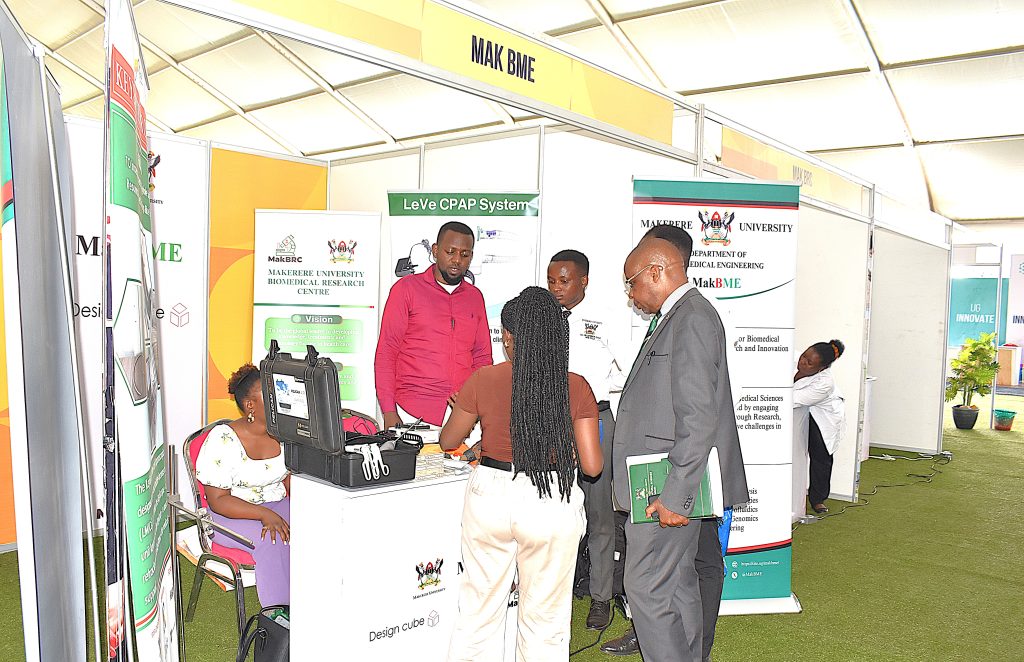
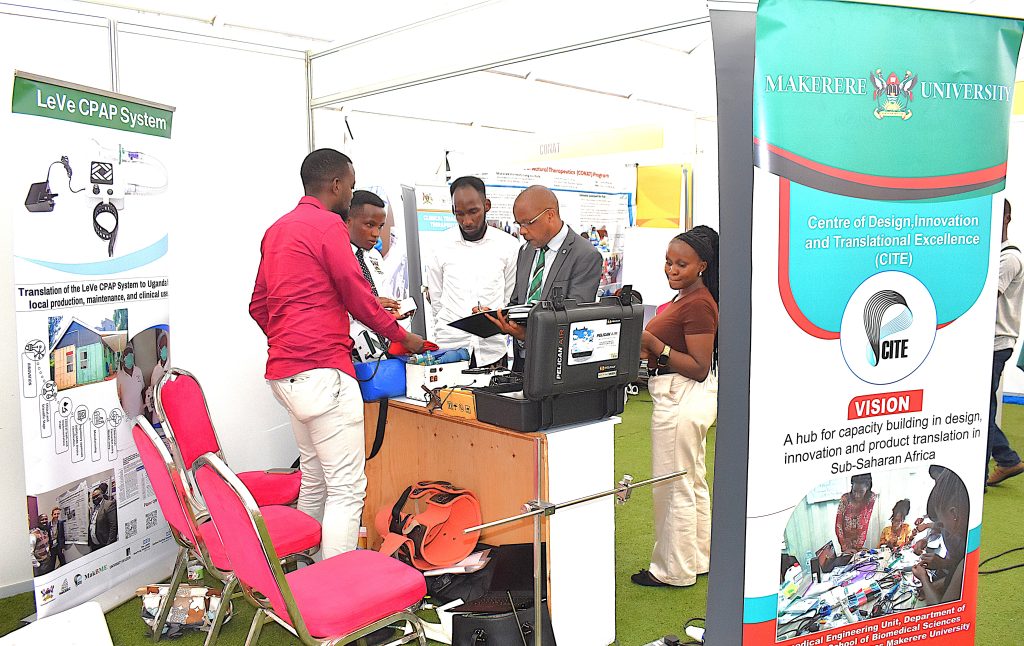
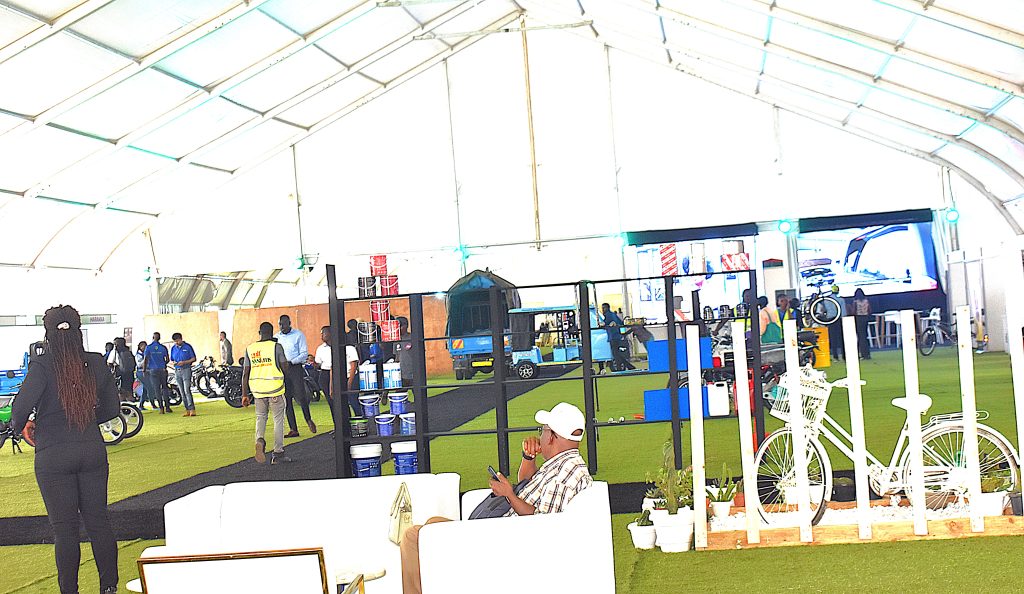
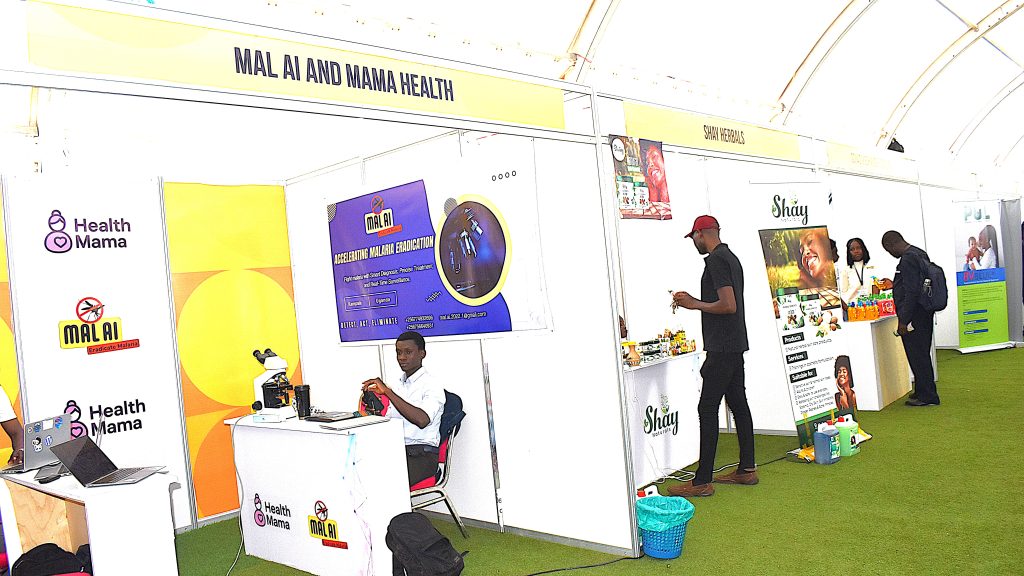
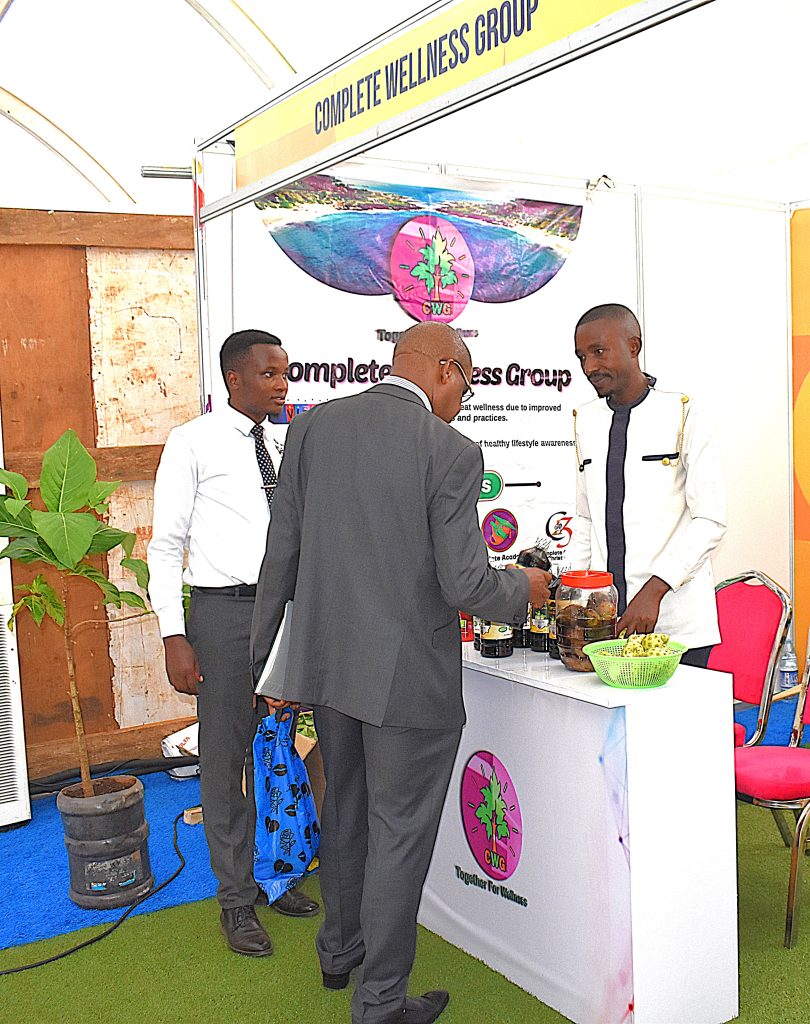
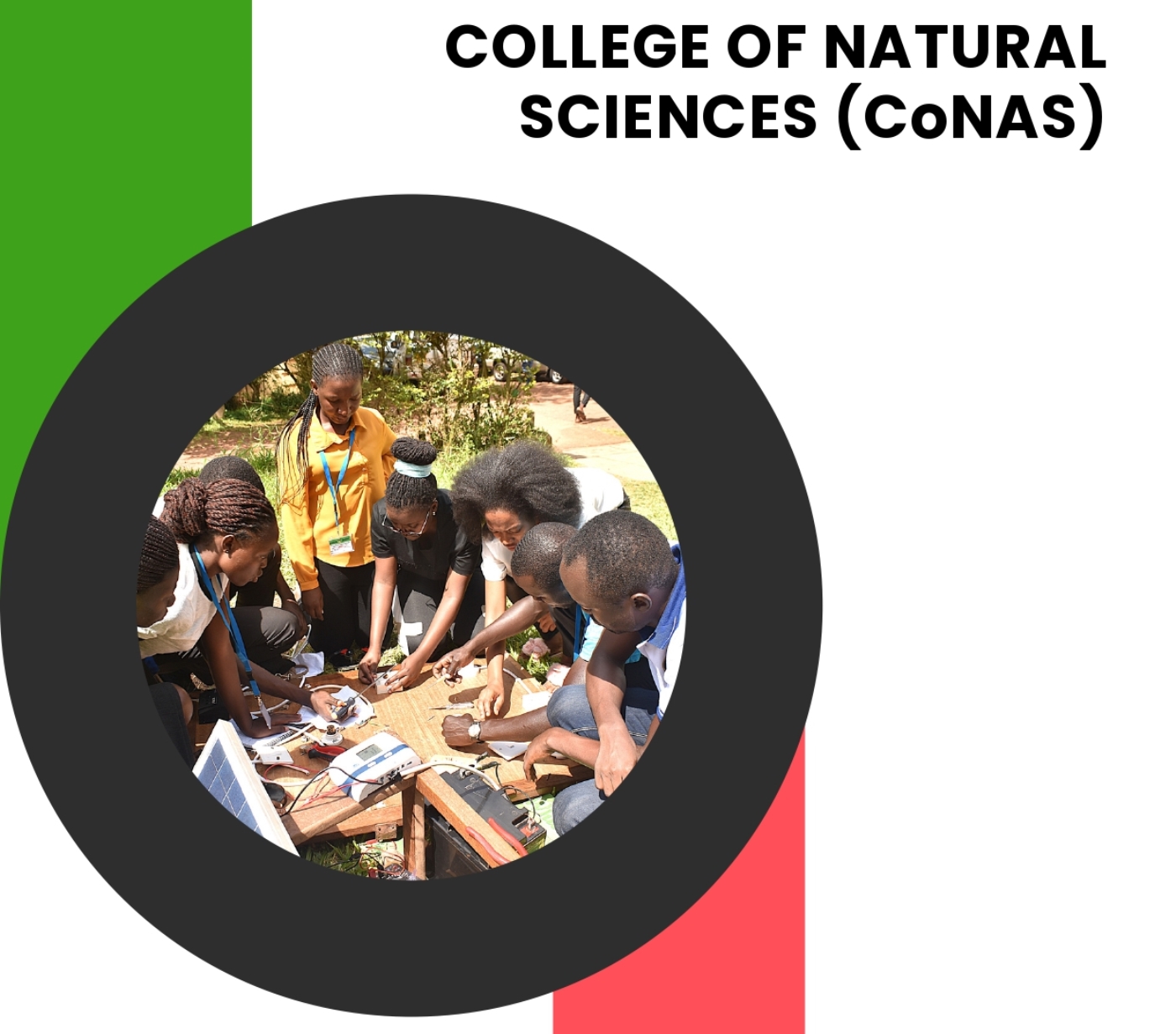
The College of Natural Sciences (CoNAS) is one of the 9 constituent colleges of Makerere University, dedicated to advancing scientific knowledge and education in Uganda.
Comprising two schools and seven departments, CoNAS offers cutting-edge research and academic programs across diverse fields, including chemistry, physics, mathematics, and biological sciences.
The College is committed to nurturing innovative thinkers and leaders who can tackle the complex challenges of today’s world through scientific exploration and discovery. With a long-standing tradition of academic excellence, CoNAS plays a central role in shaping Uganda’s scientific and technological future. It fosters a culture of critical thinking, problem-solving, and sustainable development. The College’s distinguished faculty, state-of-the-art laboratories, and collaborative research initiatives continue to inspire and develop world-class professionals who make significant contributions to both national and global progress.
This edition of the report highlights the activities and achievements of 2024, aligned with the University’s strategic focus on Innovative Teaching and Learning, Research, Innovations and Technology Transfer, and Strategic Engagement and Partnerships.
Natural Sciences
Preparing Graduates for Life after University: CoNAS Launches Terminal Seminar for Final Year Students
Published
2 months agoon
April 24, 2025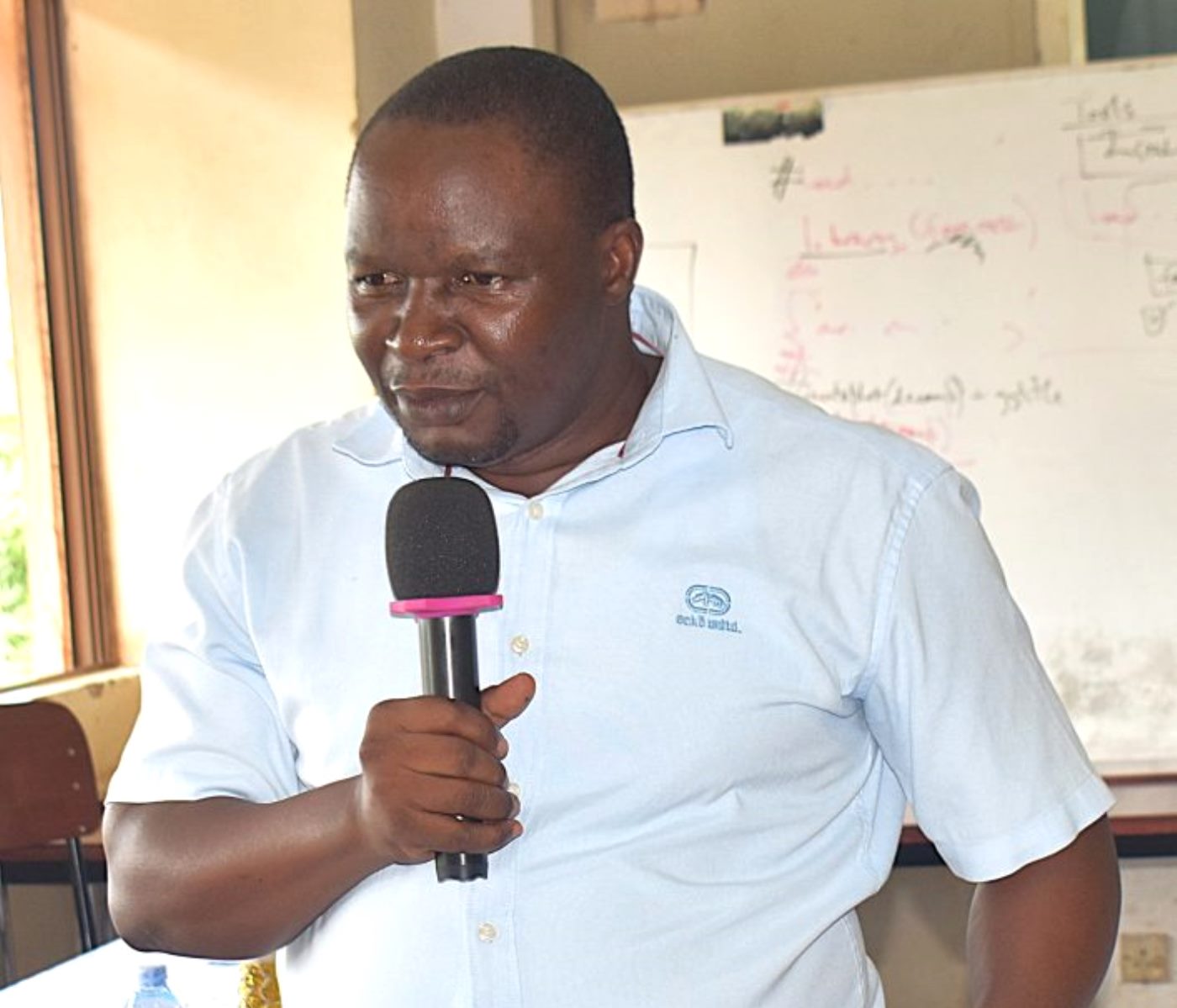
Relevance of the seminar
Transitioning from university life to the professional world can be a daunting experience for many graduates. This challenge is particularly pronounced in Uganda, the broader East African region, and across Africa, where many university leavers find themselves ill-equipped to face the realities of life after school. Issues such as limited career guidance, lack of personal development resources, and insufficient awareness of societal expectations leave many graduates unprepared for what lies ahead.
According to data from the Uganda Bureau of Statistics (UBOS), the youth unemployment rate in the country stands at approximately 13.3%. Each year, over 400,000 graduates join the job market, all vying for a mere 9,000 available formal employment opportunities. This staggering imbalance creates a climate of intense competition, often resulting in widespread disillusionment, anxiety, and in severe cases, depression – largely due to the absence of structured transition programmes to support young people during this critical phase of life.
While some graduates manage to find employment, launch entrepreneurial ventures, or pursue further academic study, many others struggle with prolonged unemployment or underemployment. This vulnerable group is at risk of turning to detrimental coping mechanisms such as substance abuse, criminal activity, or social withdrawal. One of the root causes of this unpreparedness is the lack of mentorship and real-world guidance in key areas such as workplace conduct, professional ethics, entrepreneurship, leadership, and personal financial management.
In response to this pressing need, the College of Natural Sciences (CoNAS) at Makerere University, through its School of Biosciences, has launched an innovative initiative – the Terminal Seminar/Symposium for Final-Year Students. Spearheaded by Heads of Departments within the School, the seminar is designed to bridge the gap between academic knowledge and the realities of post-university life by equipping students with essential life and career skills.
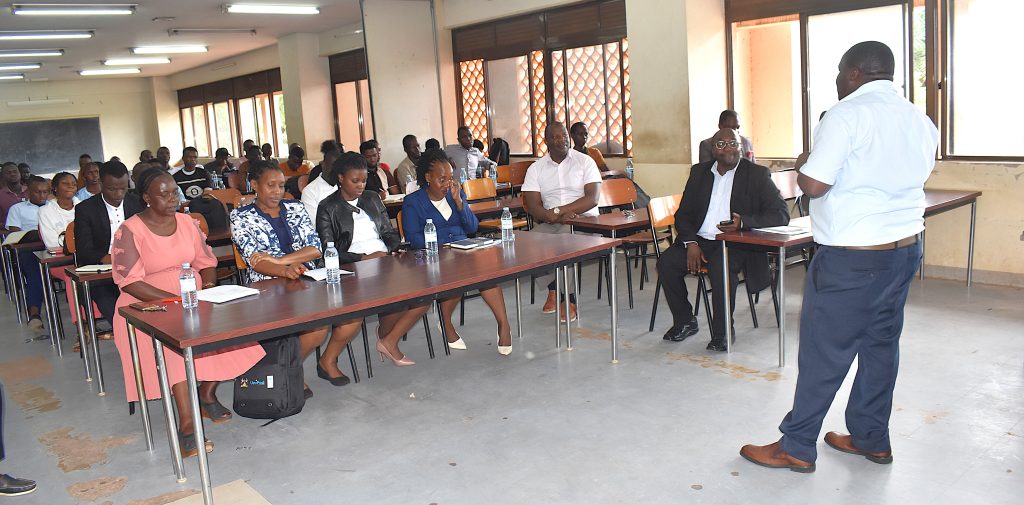
Objectives of the Terminal Seminar
The seminar aims to:
- Impart practical knowledge on workplace ethics, professional behaviour, and employability.
- Cultivate entrepreneurial thinking and leadership skills, enabling students to create their own opportunities.
- Provide strategies for coping with unemployment, social pressure, and the transition period.
- Raise awareness about mental health and equip students with tools to manage transition-related stress.
- Offer insights into navigating employment in public and private sectors, non-governmental organizations (NGOs), and the global job market.
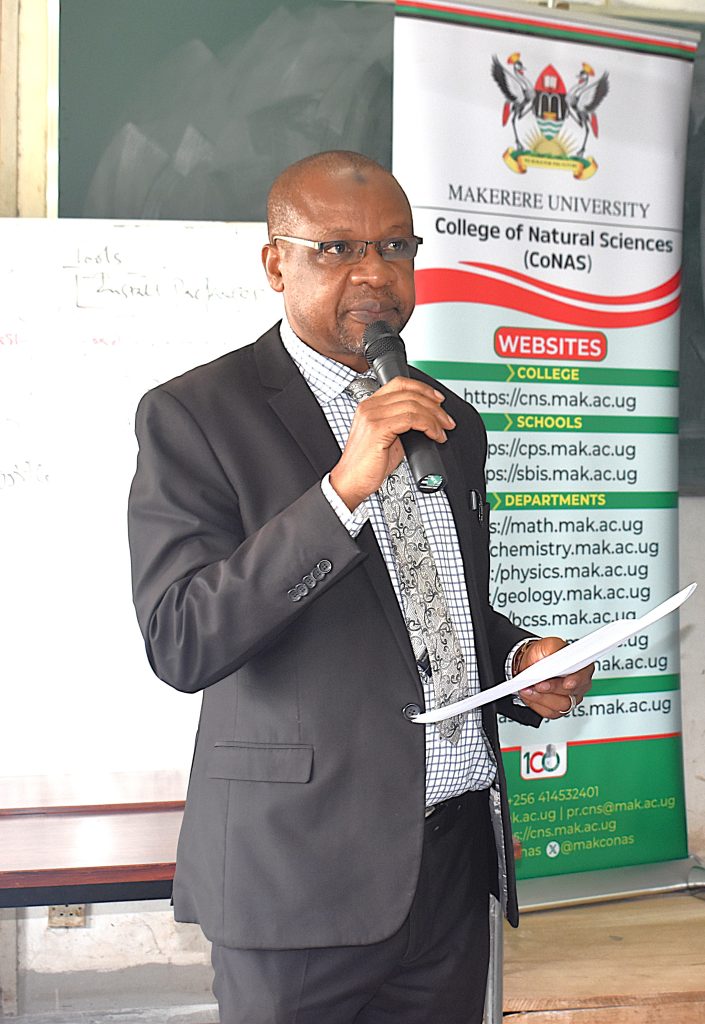
Expected Outcomes
By the end of the programme, students are expected to:
- Gain a broader awareness of career and self-employment opportunities.
- Develop realistic expectations about the challenges and opportunities post-university.
- Experience reduced levels of frustration and vulnerability to harmful behaviours.
- Build connections and networks with industry professionals and mentors.
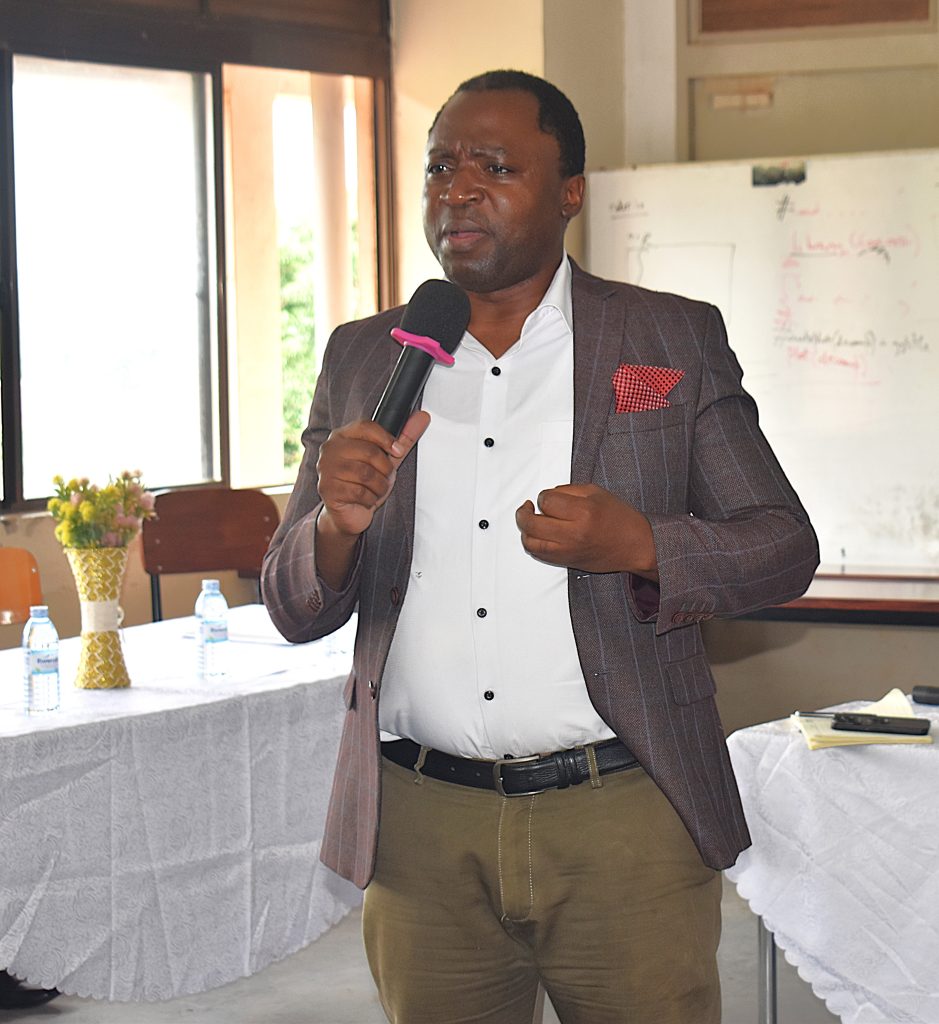
2025 Terminal Seminar Event Highlights
On 23rd April 2025, CoNAS held its flagship Terminal Seminar for Final Year students set to complete their studies in June 2025. The seminar was coordinated by Dr. Godfrey Kawooya Kubiriza, Head, Department of Zoology, Entomology, and Fisheries Sciences, with support from Dr. Barbra Nerima and Dr. Joel Isanga, both faculty members from the Department of Biochemistry and Systems Biology.
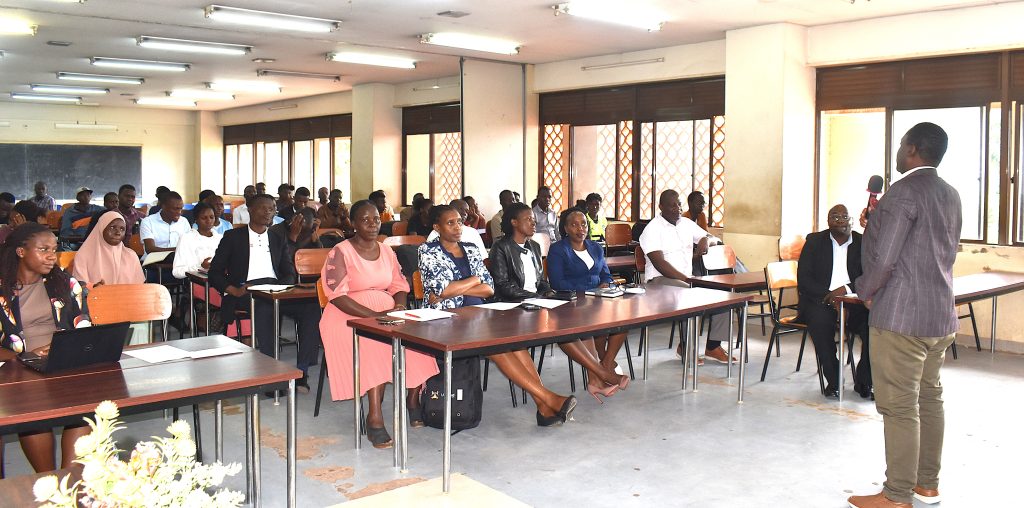
The event featured a series of empowering sessions, designed to help students navigate the transition from academic life to the professional world. Key topics included career planning, workplace ethics, entrepreneurship, and mental well-being.
A line-up of seasoned professionals and motivational speakers – including Mr. John Walugembe, Executive Director of the Federation of Small and Medium Sized Enterprises Uganda, and Dr. Catherine Mbidde, Ag Director, Makerere University Innovations Pod (UniPod), also Lecturer at the School of Business at CoBAMS, shared their personal journeys, professional insights, and practical advice for thriving beyond the university walls. Other Speakers included Dr. Alex Behakanira from the Department of Mathematics, Makerere University; Mr. Henry Nsubuga, Manager, Counselling and Guidance Centre, Makerere University; Mr. Maurice Ssebisubi, Senior Programme Officer (Fisheries and Environment) at the Embassy of Iceland; and Ms. Sylvia Kajubi, Deputy Principal at the Insurance Training College of Uganda.
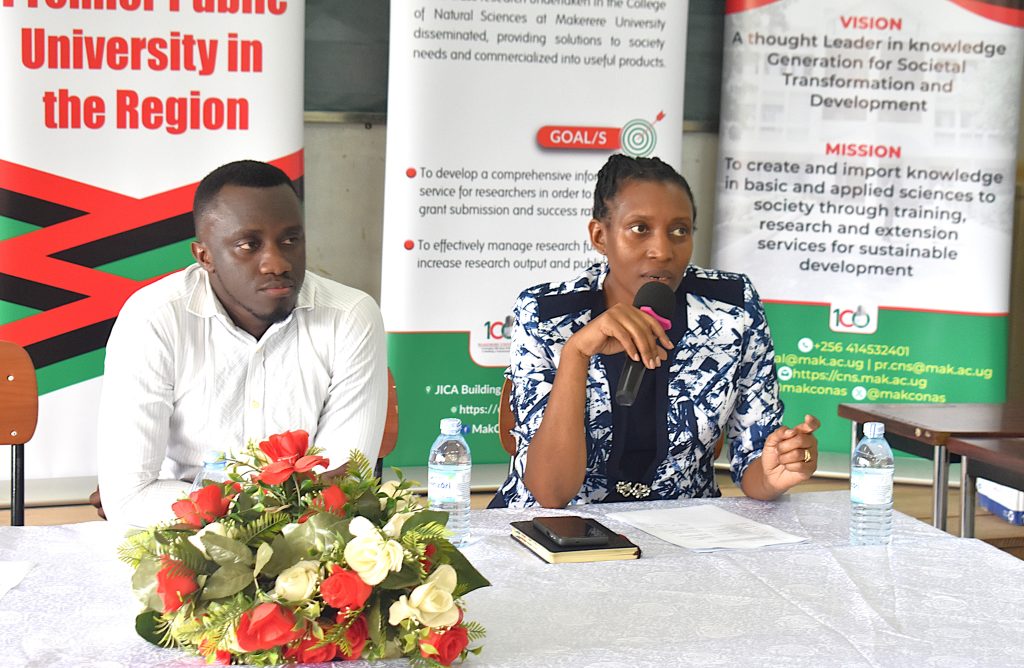
Sharing his personal journey, Mr. John Walugembe offered valuable insights to students, emphasizing the critical importance of time management in shaping a successful career. He encouraged them to cultivate patience, resilience, and integrity as they transition from academic life into the professional world.
Mr. Walugembe also urged the students to maintain an open mind when approaching the job market. “You should not confine yourselves to roles within your academic fields. Remain open to exploring a wide range of opportunities that may arise. You need to approach the job market with flexibility,” he advised.
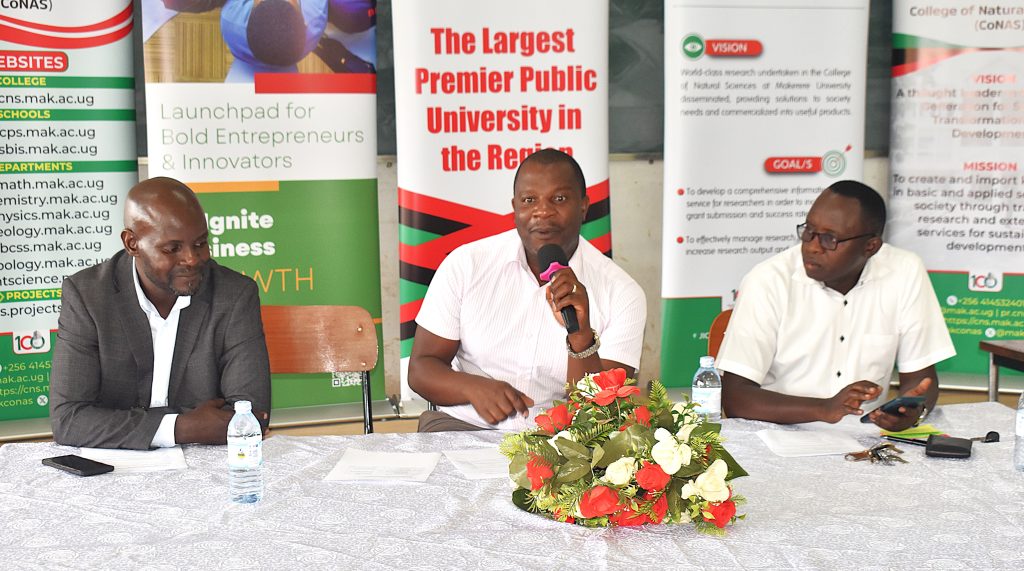
In addition, he highlighted the dual significance of academic excellence and strong professional networks, noting that good grades can open doors, but relationships and connections often determine how far one can go in their career journey. “The best way to build networks is to improve your value,” he advised.
Addressing the students on how to leverage the digital landscape to advance their careers, Dr. Catherine Mbidde emphasized the transformative potential of digital tools in shaping future opportunities. She, however, expressed concern over the growing trend of digital tool misuse – platforms that could otherwise be harnessed to explore career paths and unlock job prospects.
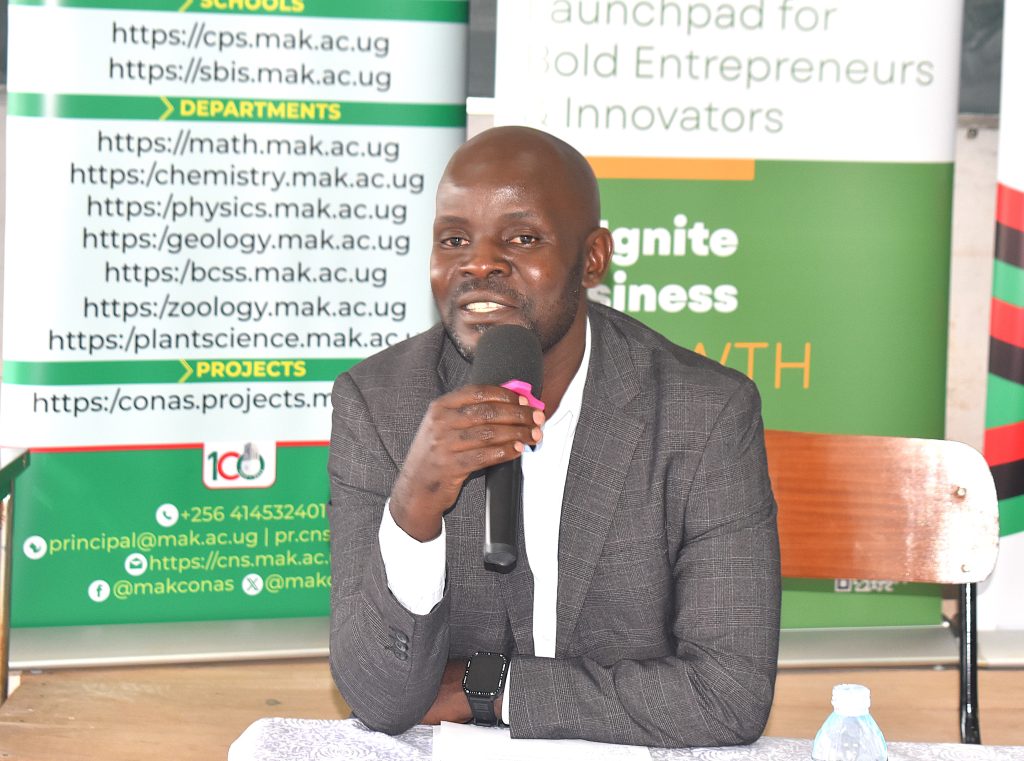
Dr. Mbidde urged the students to invest in nurturing their entrepreneurial skills, encouraging them to proactively develop plans, engage in regular self-assessment, and seek out mentors who can offer guidance and support along their professional journeys. She underscored the importance of spiritual grounding, advising students to cultivate a strong relationship with God as a source of direction and resilience in navigating the complexities of their career paths.
Mr. Basiima Collins from UniPod emphasized the importance of a mind-set shift as graduates navigate their career paths. He urged students to actively participate in networking events and foster an entrepreneurial mind-set, stressing that these actions are essential for personal and professional growth. “By embracing opportunities for networking, you can build valuable connections and open doors to new possibilities. Additionally, cultivating an entrepreneurial mind-set allows you to approach challenges with creativity, resilience, and a proactive attitude, which are crucial qualities for success in today’s dynamic job market.”
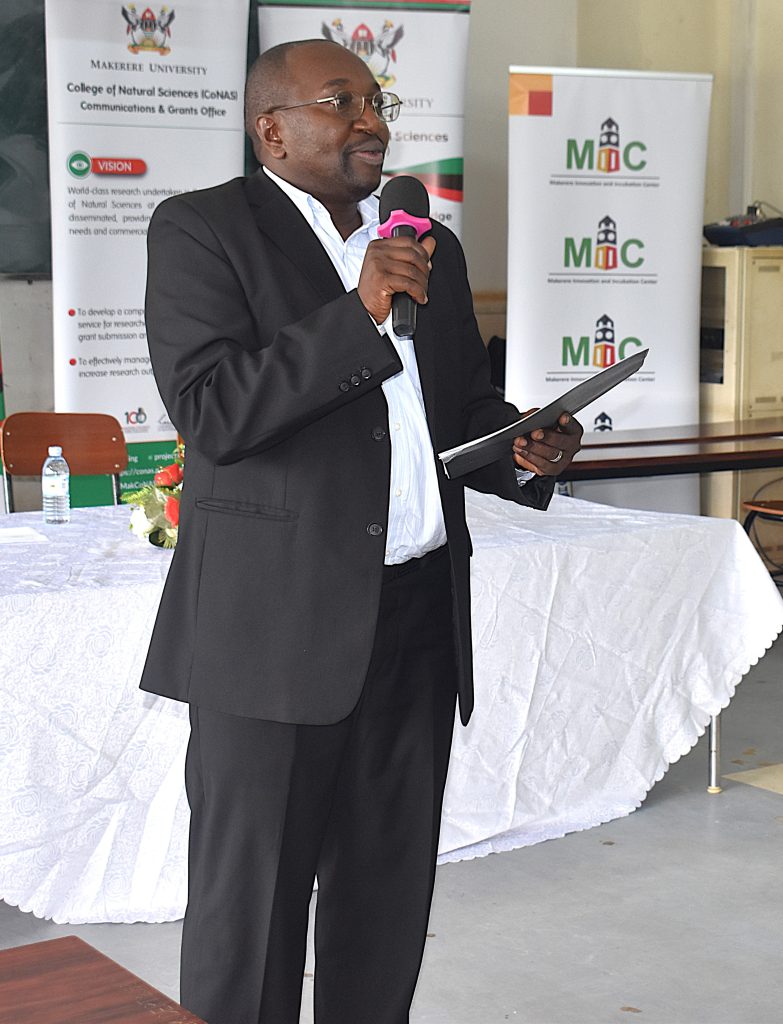
Addressing students on the significance of mental health in the journey of career development, Dr. Alex Behakanira emphasized the need to remain open-minded and adaptable. He noted that although job opportunities may appear scarce, the broader landscape of opportunities remains vast and ever-evolving. Dr. Behakanira encouraged students to strive for relevance not only in their professional environments but also within their homes and communities, underlining the importance of being well-rounded individuals. Echoing this sentiment, Mr. Henry Nsubuga stressed the importance of safeguarding one’s mental well-being throughout their career path. He advised students to cultivate a resilient mind-set and to be intentional about steering clear of situations that may lead to emotional distress or depression.
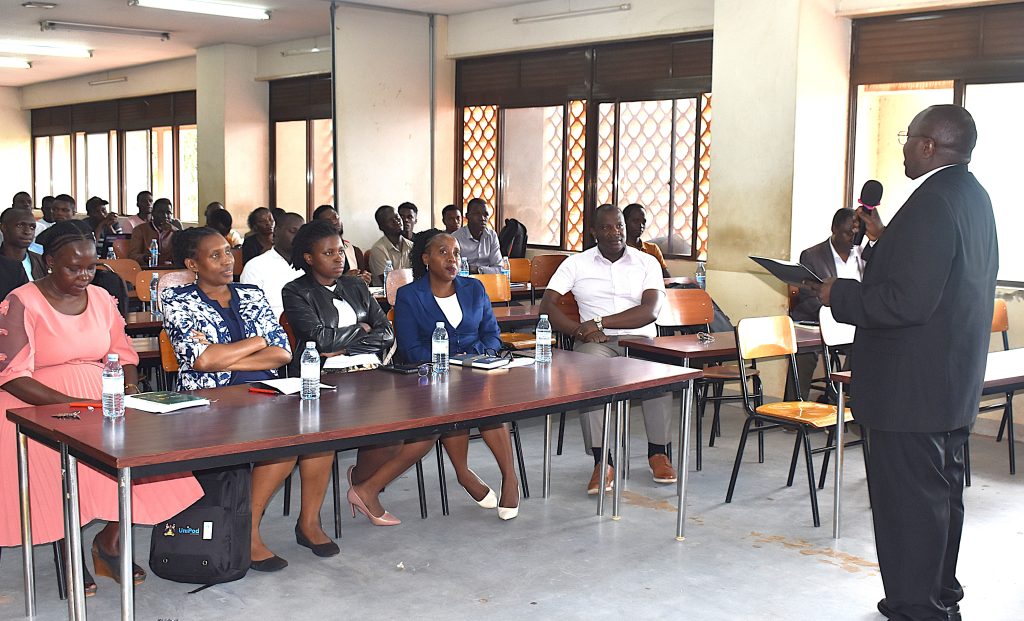
In his remarks, Prof. Juma Kasozi, the Deputy Principal of the College of Natural Sciences (CoNAS) and Head of Academics, expressed his appreciation for the initiative. He commended the effort as a timely and strategic intervention aimed at equipping students with the practical knowledge and emotional resilience necessary to navigate the dynamic and often challenging world of work. Prof. Kasozi emphasized that such initiatives play a crucial role in bridging the gap between academic theory and real-world application. He extended sincere gratitude to the seminar coordinators, praising their foresight and dedication in conceptualizing and organizing the programme.
The Terminal Seminar will be held on an annual basis.
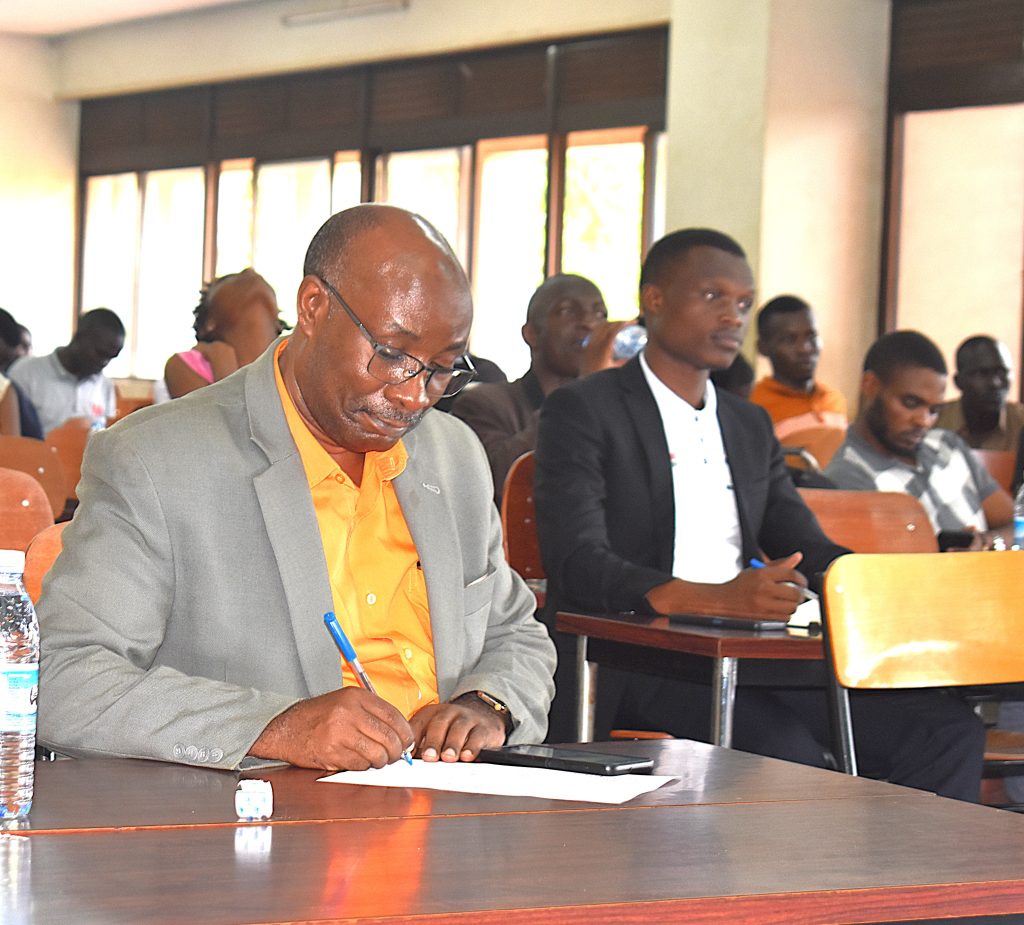


Trending
-

 General6 days ago
General6 days agoMature Age Scheme Exam Results for 2025/2026
-

 General1 week ago
General1 week agoFreshers’ Joining Instructions 2025/2026
-

 General2 days ago
General2 days agoUndergraduate Admission List Self Sponsorship Scheme 2025/2026
-

 General2 weeks ago
General2 weeks agoMastercard Foundation Board pays its inaugural visit to Makerere University
-

 General1 week ago
General1 week agoUVCF Makes Case for HEAC Programme
